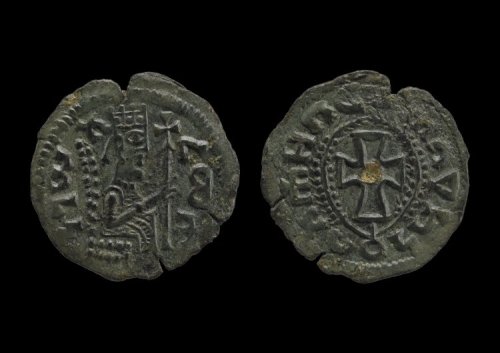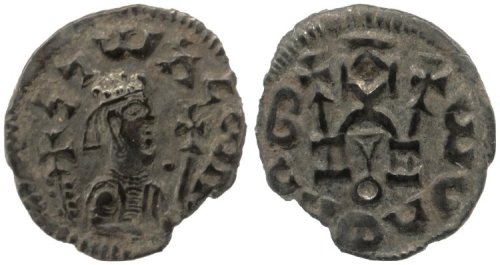These two bronze coins are the final evidence of the political history of Axum; nothing remains
These two bronze coins are the final evidence of the political history of Axum; nothing remains that documents any subsequent kings. They were minted by King Armah of Axum in the early 600s AD, and are held at the British Museum. The decline of the Kingdom of Axum can be seen in several details on the coin: (1) the material of the coin is bronze, rather than gold or silver, meaning that it was meant for local circulation, (2) the inscription, although attempting to mimic Greek sayings (“Let gladness be to the peoples”), is written in Ge'ez rather than Greek, so that only a local audience could understand it, and (3) the cross-topped arch on the reverse of the second coin is, according to one theory, a representation of the Holy Sepulcher; a reference to the Arab conquest of Jerusalem in 637. Was the emphasis on Christianity in the coins’ iconography meant to invigorate Axum’s sense of identity in the face of defeat? Was the (possible) reference to the conquest of Jerusalem meant to display Axum’s friendship and subservience to the new Rashidun Caliphate? -- source link
Tumblr Blog : artofthedarkages.tumblr.com
#medieval#history#dark ages#africa#numismatics

